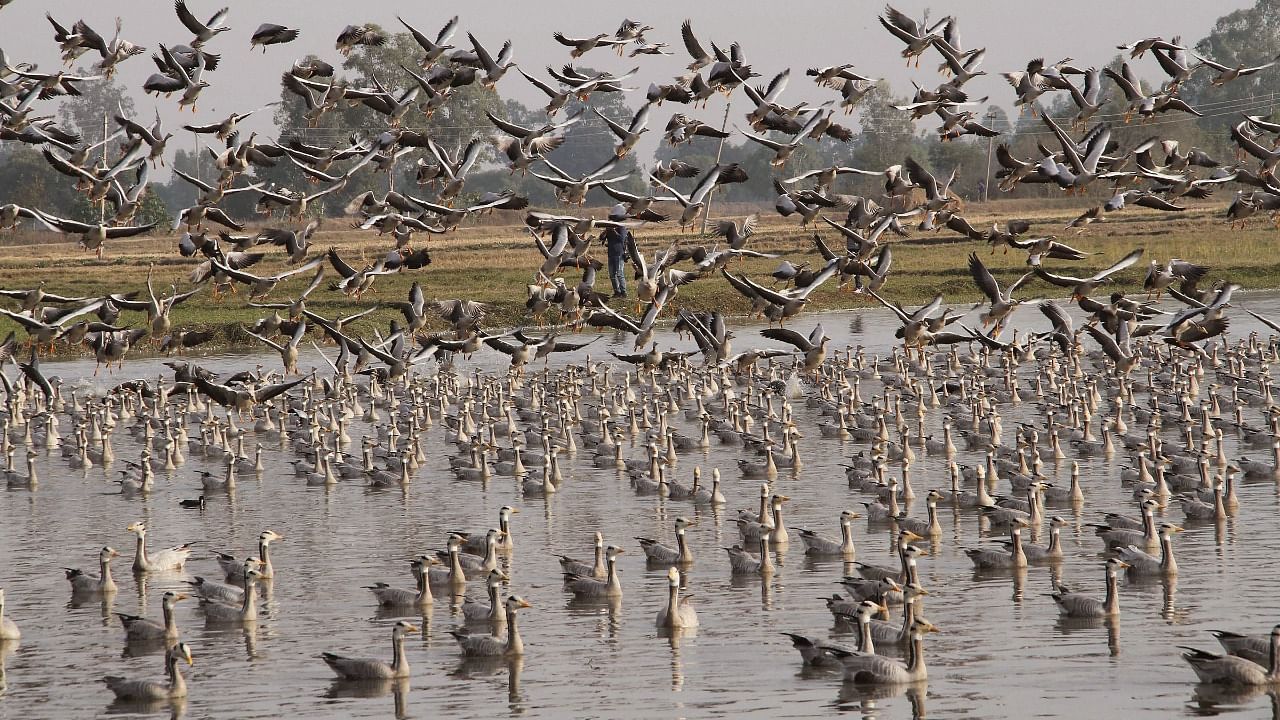
Maintaining their centuries-old tryst with Kashmir, thousands of migratory birds from many European and other western countries have started arriving here, bringing cheer to bird watchers of the valley.
The arrival of these migratory birds from Siberia and China as well as Philippines, Eastern Europe and Japan to spend the winter months in the relatively less harsh weather of the Valley has led to a riot of colour and cackle in the wetland reserves of Kashmir.
Regional Wildlife Warden (Wetlands) Rashid Naqash said an estimated over four lakh migratory birds have already arrived in the Valley after flying thousands of miles and navigating by instinct.
“By the middle of this month, we are expecting large numbers of these avian visitors, who come here to spend the winter months to escape the extreme freezing conditions in their natural habitats,” he said.
Naqash said last year an estimated 10 lakh migratory birds had arrived in Kashmir and “we're sure this season the number will be much higher than their last arrival''.
J&K has four wetlands identified as Ramsar Sites and the migratory destination for birds arriving from Siberia and other places. Wular Lake, Dal Lake, Hokersar and Mirgund Lake are among a few important wetlands of the valley where these migratory birds have been making a temporary shelter for the winter months.
However, the threat of migratory birds being poached and hunted is keeping the Wildlife officials on their toes. “Inside the bird reserves like Hokersar, Hygam and Shallabugh, where the permanent staff of the department is posted, we have no threat of poachers,” Naqash said.
But, he said the real threat of these birds falling prey to poaching becomes a problem in unprotected and isolated wetlands where there’s no permanent staff of the Department.
Wildlife Warden (Wetlands), Ifshan Dewan says that in order to provide a feasible ambiance to the visiting avian guests, the wildlife department has taken several measures to maintain sufficient water levels in all the wetlands of the valley.
During the extreme freeze in the wetland reserves, when natural feeding becomes difficult, the wildlife department arranges large stocks of paddy for feeding these birds.
Check out DH's latest videos: